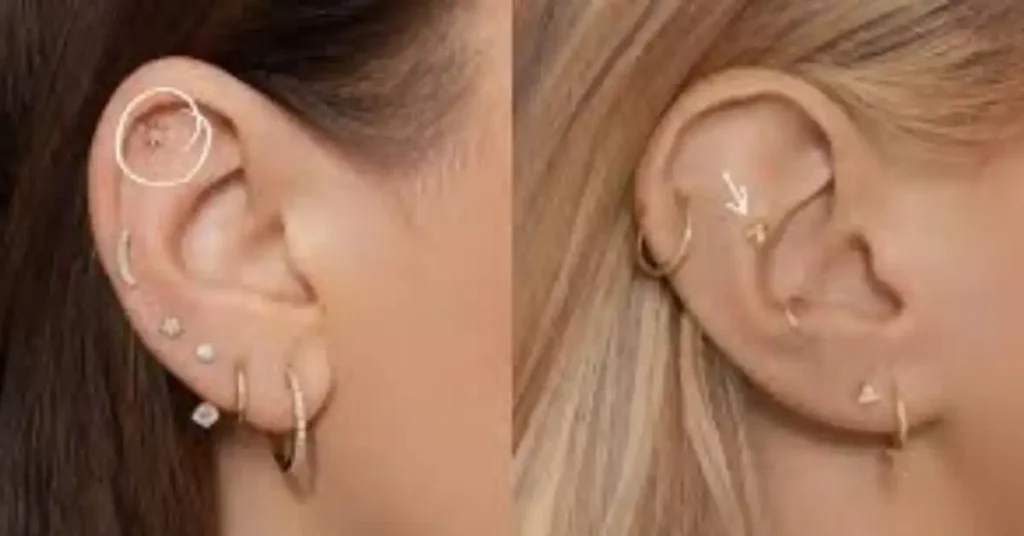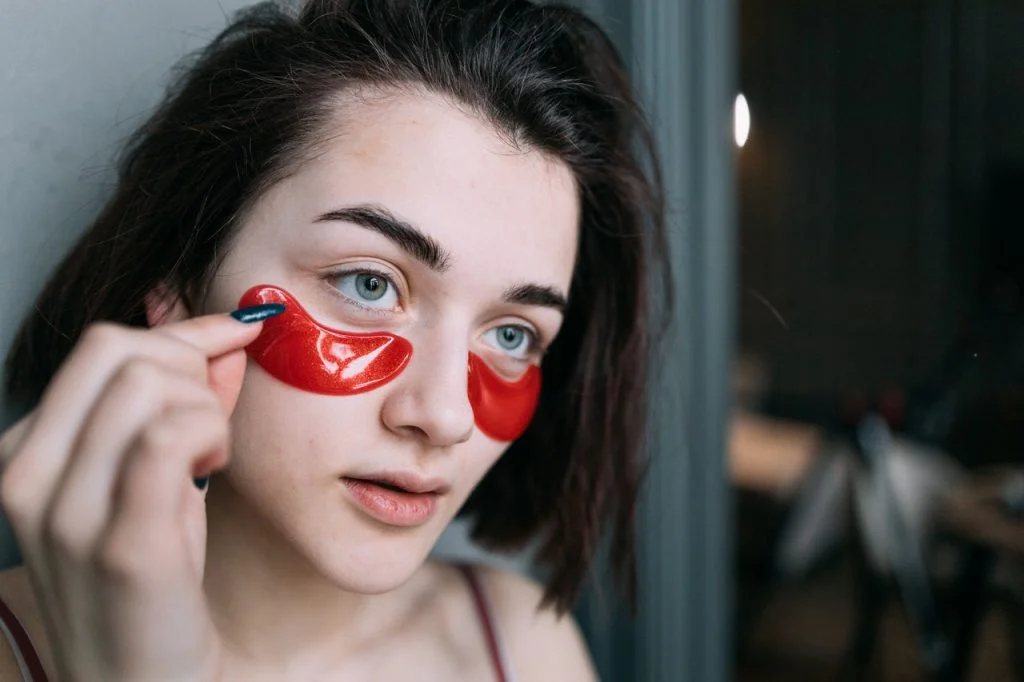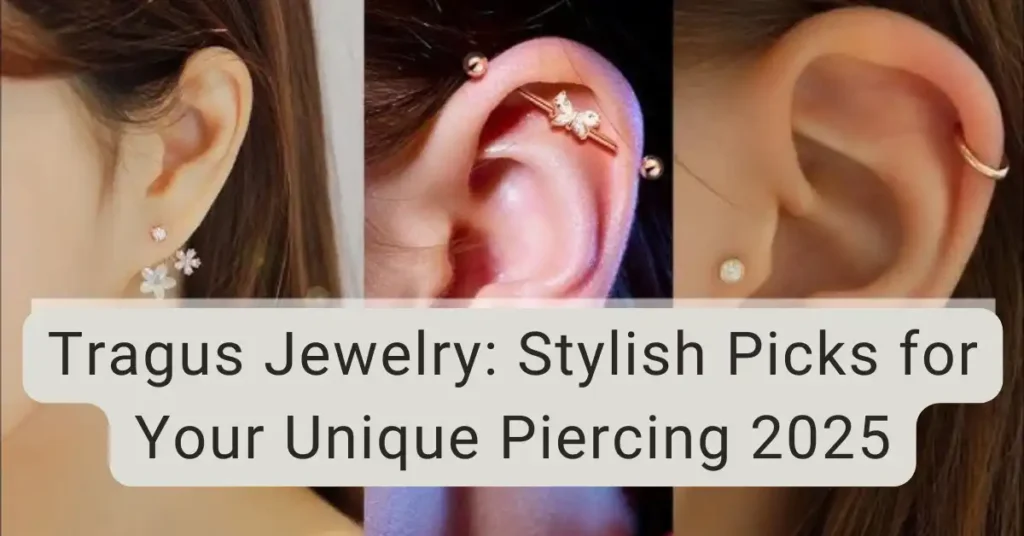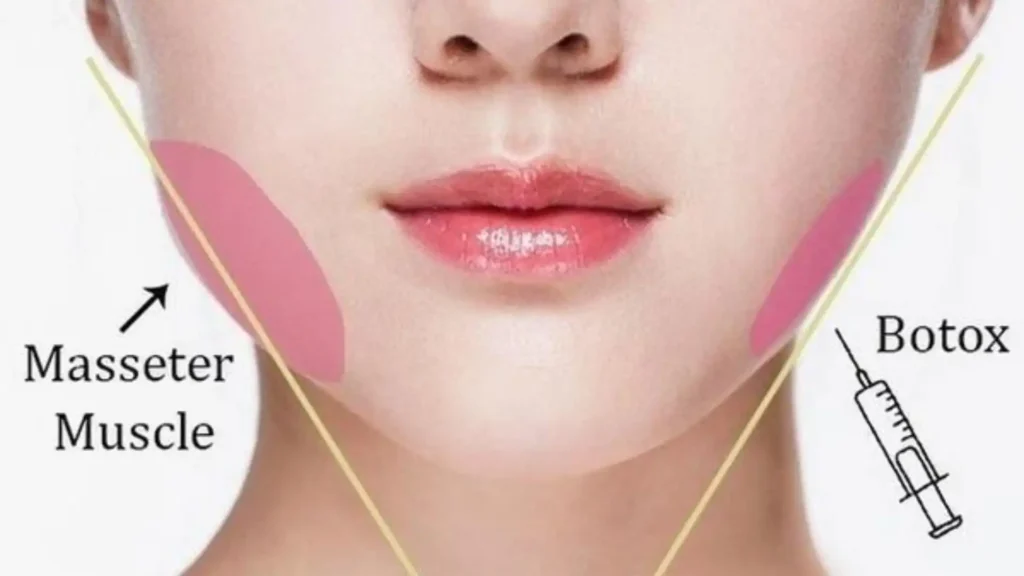Flat piercings have gained immense popularity for their stylish and customizable appeal. Placed on the upper cartilage of the ear, this piercing allows for a variety of jewelry styles, from minimal studs to elaborate decorative pieces. Whether you’re considering a flat piercing for the first time or adding to your ear curation, understanding the process, placement, and aftercare is essential for a smooth healing journey. Let’s dive into everything you need to know about flat piercings.
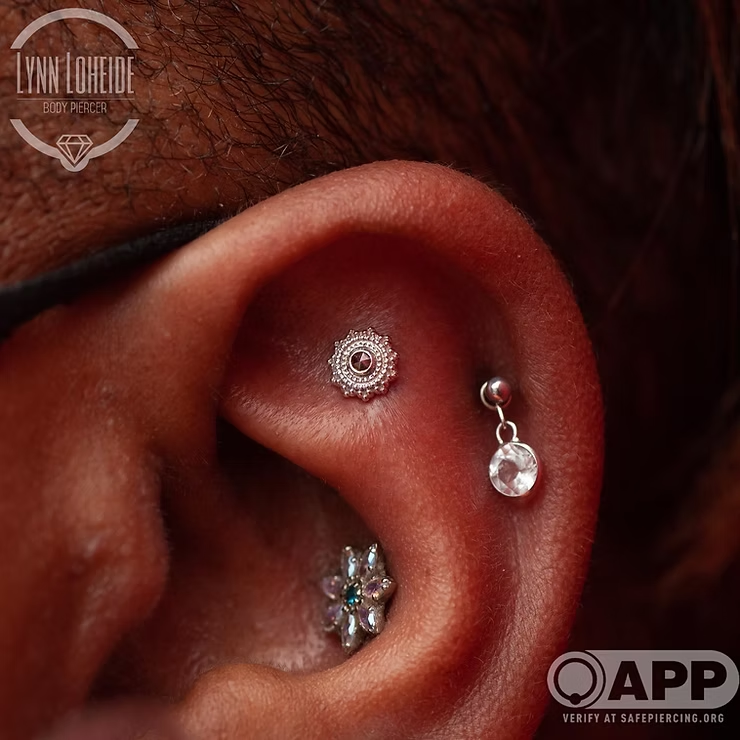
Anatomy and Placement – A Delicate Balance
Like many cartilage piercings, flat piercings are anatomy-dependent. Fortunately, most people have a suitable area for a flat piercing, but the exact placement can vary based on ear shape and structure.
Some individuals have a completely flat area, allowing larger clusters to sit evenly, while others may have ridges and curves, affecting how the jewelry lays. The thickness of your cartilage also plays a role in healing—thicker cartilage can take longer to heal, while thinner cartilage is more prone to migration.
Factors to Consider Before Placement:
- Jewelry Preference: Do you want a simple stud or an elaborate design?
- Ear Anatomy: Some ears have more flat space than others.
- Daily Lifestyle: Do you wear glasses, headphones, or helmets? These can interfere with healing.
- Multiple Piercings: If you plan to stack or layer piercings, your piercer should strategize placement accordingly.
For those who use hearing aids or other auditory devices, a well-placed flat piercing can be compatible, but it’s best to consult with your piercer beforehand. Bringing your device to your appointment allows the piercer to adjust placement accordingly.
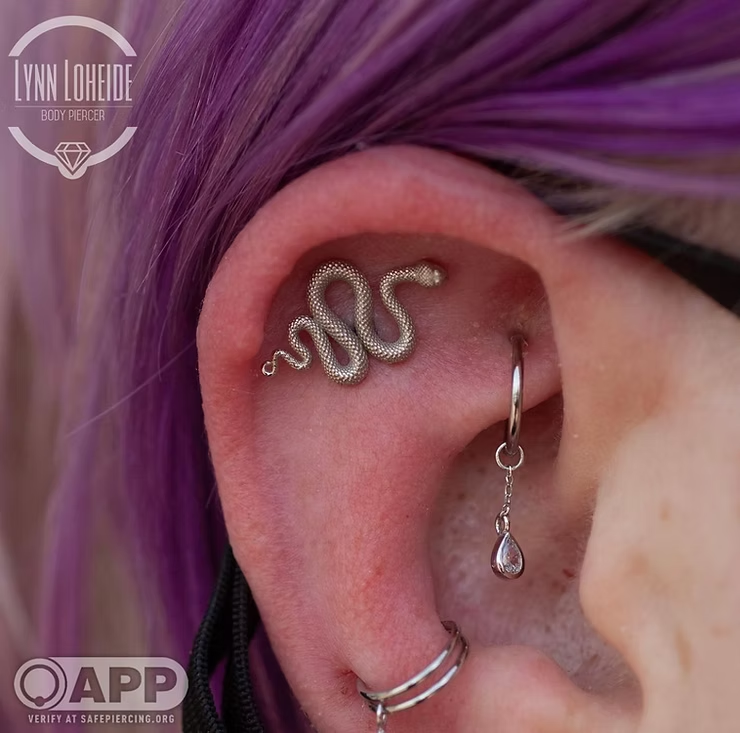
Initial Jewelry: Choosing the Right Piece
Your initial jewelry choice is critical for comfort and healing. A flat-back stud is the best option, ensuring minimal irritation and snagging. Titanium or solid gold jewelry is recommended, as these materials reduce the risk of allergic reactions.
Jewelry Considerations:
- Size Matters: Smaller, simpler studs are easier to heal than large, heavy pieces.
- Length Adjustment: Initial jewelry should be slightly longer to accommodate swelling.
- Flat Backs for Comfort: Unlike butterfly back earrings, a flat backing prevents pressure and irritation.
- Upgrading Later: Once healed, you can experiment with chains, dangles, or decorative ends.
Pro Tip: Downsizing your jewelry after the initial swelling subsides (typically within 2-4 weeks) helps prevent migration and ensures the piercing stays in place.
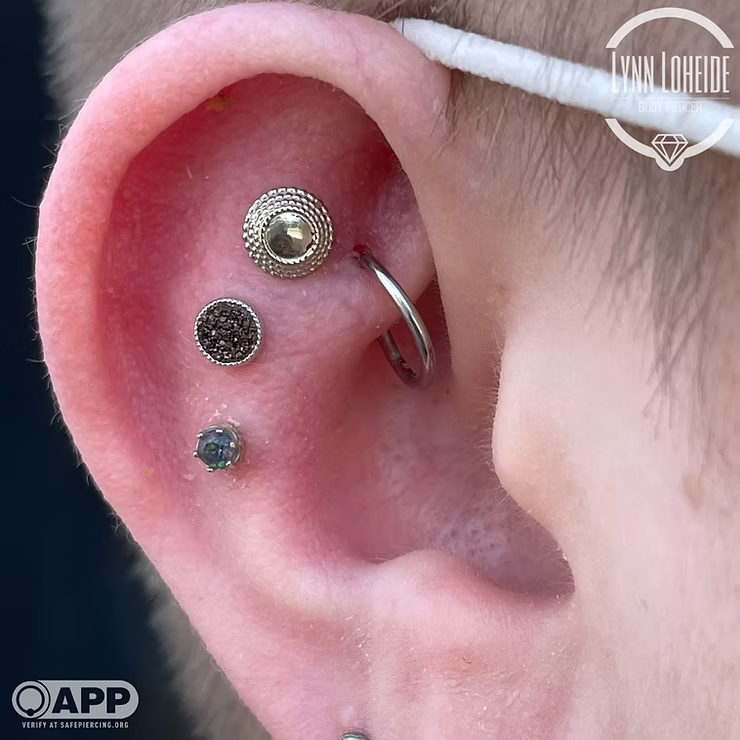
Healing Expectations: What to Expect & Aftercare
When properly placed and cared for, flat piercings can be relatively easy to heal. However, since cartilage is more rigid than lobe tissue, healing requires patience and diligence.
Healing Timeline:
- Average healing time: 6 to 9 months (sometimes up to a year)
- Downsizing needed: Within 2-4 weeks to prevent movement and irritation
- Signs of healing: Less tenderness, reduced redness, and minimal crusting
Aftercare Tips for a Smooth Healing Process: ✅ Clean Twice a Day: Use a saline solution or sterile wound wash. ✅ Avoid Sleeping on It: Pressure can cause irritation and migration. Use a travel pillow for protection. ✅ No Touching or Twisting: This disrupts healing and introduces bacteria. ✅ Mind Your Hair & Clothing: Be gentle when brushing your hair and taking off shirts. ✅ Stay Away from Alcohol & Peroxide: These dry out the skin and delay healing.
Common issues include snagging on hair, sleeping pressure, and forgetting to downsize—all of which can lead to complications like bumps or prolonged healing. A regular check-up with your piercer ensures the piercing is healing correctly.
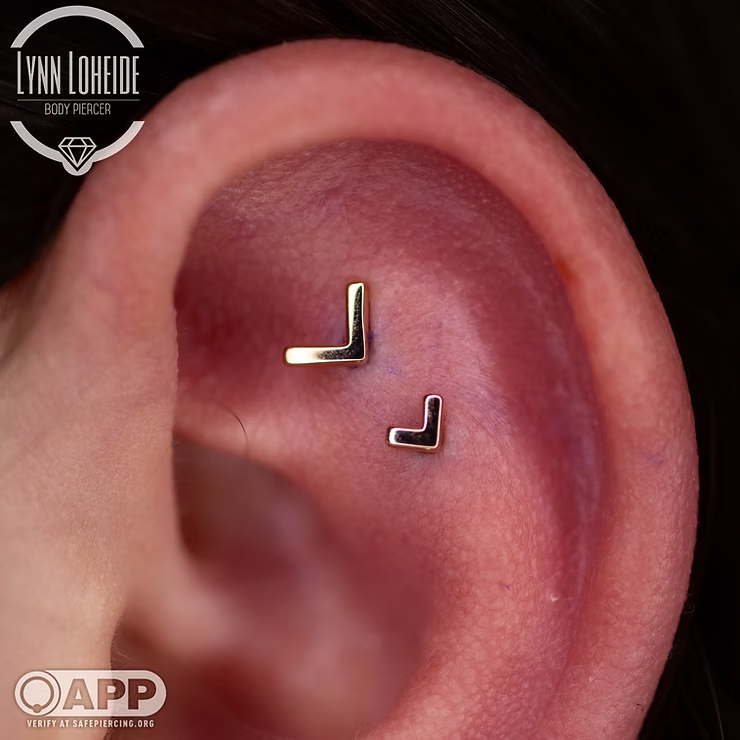
Why Flat Piercings Migrate (And How to Prevent It)
Flat piercings are more prone to migration compared to some other cartilage piercings. This occurs when the jewelry moves or shifts from its original placement, often leading to discomfort or an awkward angle.
What Causes Migration?
- Sleeping on it constantly
- Not downsizing in time
- Using low-quality or ill-fitting jewelry
- Frequent irritation from headphones, glasses, or hair products
Prevention Tips: ✔️ Get pierced with a 16G or 14G needle for better stability. ✔️ Stick to implant-grade materials (titanium, gold) to reduce irritation. ✔️ Prioritize downsizing within a month to prevent excessive movement. ✔️ Be mindful of pressure and friction from daily habits.
Final Thoughts: Is Flat Piercing Right for You?
Flat piercings are a stylish, versatile, and trendy addition to any curated ear. They work well for most people and offer endless jewelry options once healed. If you’re looking for a unique way to express your style, this piercing is a fantastic choice.
While healing requires patience, proper aftercare and downsizing will ensure a smooth and successful journey. Work with a professional piercer to find the perfect placement for your anatomy and lifestyle.
Thinking about getting a flat piercing? Go for it! It’s one of the most rewarding cartilage piercings with a world of jewelry possibilities waiting for you!
Follow us on:📌 Pinterest | 📘 Facebook

